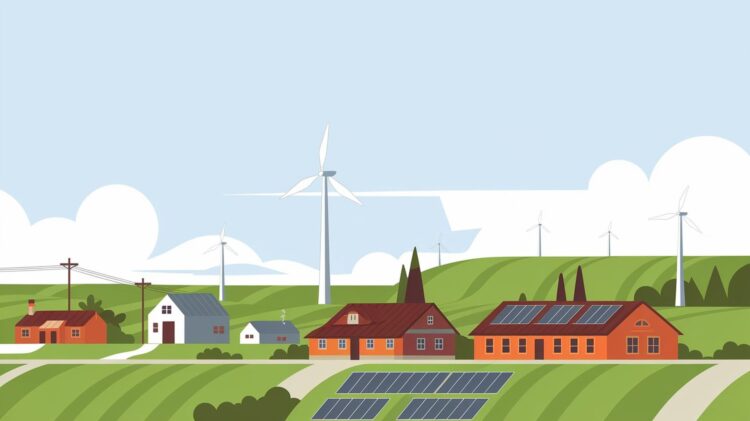In a decisive move toward renewable energy in rural America, the Biden administration has announced Biden 3 billion dollar rural electrification funding that will extend support to seven key rural electric cooperatives. The Inflation Reduction Act rural energy investment positions this funding to modernize energy access for much-needed resources in rural communities and build sustainable infrastructure.
Some parties badly received the fact that some of the prohibited acts had been carried out with election campaigns under the umbrella but responded using meeting the essential needs of these people in political ambitions and as a trump card at the very last moment of the campaign.
How Biden 3 billion dollar rural electrification funding supports clean energy in rural communities
On Friday, the Department of Agriculture detailed how $3 billion, including $2.5 billion for the Tri-State Generation and Transmission Association, would flow through. Six other cooperatives in states from South Carolina to Minnesota will also receive nearly $1 billion. Biden’s $3 billion rural electrification fund is one of the largest rural energy investments since the New Deal.
This money came as part of the Inflation Reduction Act’s rural energy investment, which seeks to raise clean energy access for rural Americans and could yield up to $430 million in benefits, including lower electricity, over the next decade. The administration focuses on cooperatives like Tri-State, which serves a massive user base across many states and creates a reliable, affordable energy source for rural consumers.

Made just before the elections, the funding is not known to continue into a new president’s term. This implies they want votes from rural areas to swing their way. But if there is such an energy shortage and this is done to keep people on their side and show that advertising is being used, this isn’t as unlikely.
Biden’s co-op funding is $3 billion in rural electrification funding, a strategic federal investment in the New Era program by which co-ops transition to renewable energy. This initiative extends these resources through Inflation Reduction Act rural energy investment funds to reduce electricity costs and construct sustainable infrastructure. For example, a large part of the rural customers, the members of the Tri-State cooperative, are slated to spend 10 percent less on electricity.
Among the seven co-ops being funded, the Tri-State allocation is far and away the largest, with funding rate reductions and increased renewable energy sourcing statewide. Biden 3 billion dollar rural electrification funding allocation confirms the administration’s goal to direct rural communities to cheaper, more dependable energy while clean energy access spreads in many states.
Friday’s Biden announcement of roughly $3 billion in funding for rural electrification is a big deal but a part of a larger energy strategy. Last month, a $7.3 billion funding announcement led rural coops in Wisconsin to receive $573 million for the Dairyland Power Cooperative. That’s thanks to the Inflation Reduction Act rural energy investment supporting this co-op’s efforts to cut electricity costs by more than 40% in the next decade — far beyond the cost savings Tri-State seeks.
Image credits: Furkan Demirkaya/Ideogram





